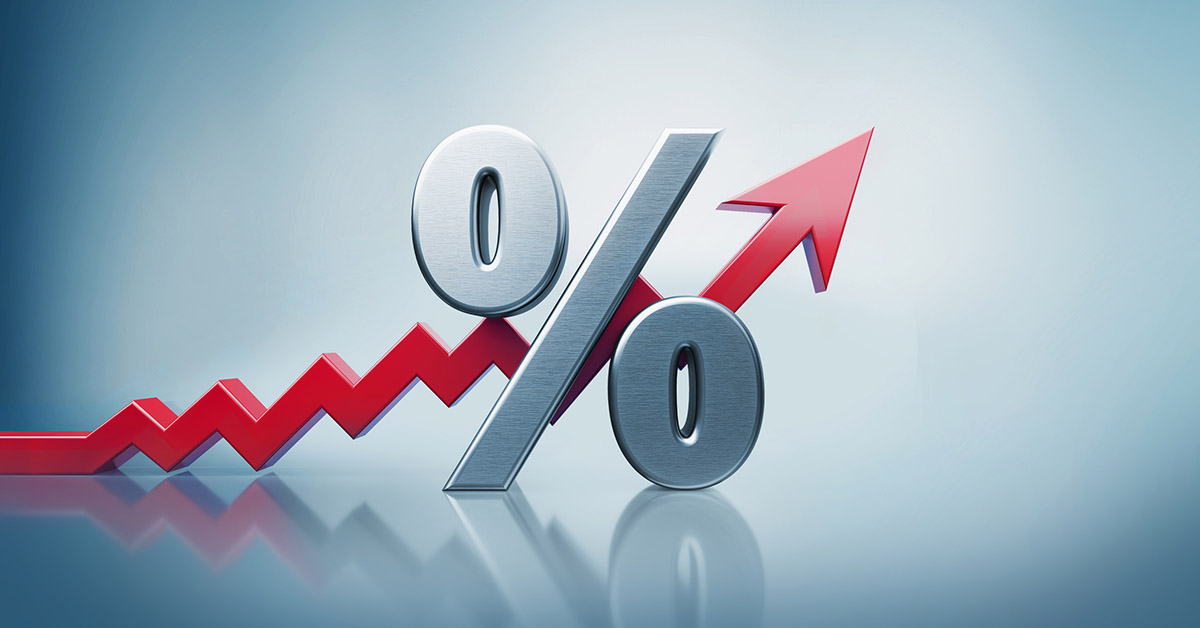Introduction
Welcome to the world of finance, where interest rates play a crucial role in shaping the economic landscape. In South Africa, one key interest rate that has a significant impact on borrowing costs and monetary policy is the Prime Lending Rate. Whether you’re a borrower, investor, or a keen observer of the financial markets, understanding what the Prime Lending Rate is and how it affects the economy is essential.
At its core, the Prime Lending Rate is the benchmark interest rate set by commercial banks and used as a reference point for determining the interest rates charged to borrowers. It serves as a foundation for the overall cost of borrowing in the country and influences the profitability of banks. In simpler terms, the Prime Lending Rate determines how much interest you’ll have to pay on loans such as mortgages, personal loans, and business loans.
Why is the Prime Lending Rate so important? Well, it acts as a vital tool for the South African Reserve Bank (SARB) to manage the country’s monetary policy. By adjusting the Prime Lending Rate, the SARB can influence borrowing costs, stimulate or cool down economic activity, control inflation, and stabilize the currency.
Understanding the factors that affect the Prime Lending Rate is key to comprehending how it impacts the larger economy. Factors such as inflation, economic growth, exchange rates, fiscal policy, global economic conditions, and the monetary policy decisions of the South African Reserve Bank can all contribute to changes in the Prime Lending Rate.
In this article, we will delve into the intricacies of the Prime Lending Rate in South Africa, its historical context, current levels, and its implications on borrowers and the broader economy. Additionally, we will compare the Prime Lending Rates offered by various banks in South Africa and provide insights on how to qualify for this favorable interest rate.
So, whether you’re a prospective borrower, an investor, or simply curious about the workings of the financial world, join us as we explore the ins and outs of the Prime Lending Rate in South Africa.
Definition of Prime Lending Rate
The Prime Lending Rate can be defined as the lowest interest rate at which commercial banks lend money to their most creditworthy customers. It serves as a benchmark rate used by banks to price a wide range of loans, including mortgages, personal loans, and business loans. The Prime Lending Rate is typically based on the repo rate set by the South African Reserve Bank (SARB), and it fluctuates in response to changes in the economic environment and monetary policy decisions.
Commercial banks determine their Prime Lending Rate by raising or lowering it above the repo rate. The repo rate is the rate at which the SARB lends money to commercial banks for short-term liquidity needs. When the SARB lowers the repo rate, it encourages banks to reduce their Prime Lending Rate, making borrowing more affordable. Conversely, when the SARB raises the repo rate, banks may increase their Prime Lending Rate, resulting in higher borrowing costs.
It’s important to note that the Prime Lending Rate is not a one-size-fits-all rate offered by all banks. Each bank in South Africa has the discretion to set its own Prime Lending Rate, although it is influenced by market trends and the SARB’s monetary policy decisions. This means that different banks may have slightly different Prime Lending Rates, although they typically remain in close proximity to each other.
The Prime Lending Rate is often used as a reference rate for other lending products. For example, a bank may offer a mortgage at “Prime + 2%,” which means the borrower’s interest rate is 2% higher than the current Prime Lending Rate. This allows borrowers to have a clear understanding of how their interest rate is structured and how it relates to the prevailing lending rates in the market.
It’s worth mentioning that the Prime Lending Rate is not static and can change over time. The South African Reserve Bank regularly assesses economic conditions and adjusts the repo rate accordingly. As a result, the Prime Lending Rate may fluctuate, impacting the interest rates on various loans and ultimately affecting the cost of borrowing for consumers and businesses.
Understanding the definition of the Prime Lending Rate is crucial for borrowers. It provides insight into how interest rates are determined and helps borrowers make informed decisions when seeking loans or considering refinancing options. By monitoring changes in the Prime Lending Rate, borrowers can potentially take advantage of lower rates during favorable economic conditions and adjust their financial strategies accordingly.
Importance of Prime Lending Rate in South Africa
The Prime Lending Rate holds great significance in the South African financial landscape and plays a crucial role in shaping the country’s economy. Here are some key reasons why the Prime Lending Rate is important:
1. Cost of Borrowing: The Prime Lending Rate directly impacts the cost of borrowing for individuals and businesses. When the Prime Lending Rate is low, it becomes more affordable to borrow money, fueling consumption, investment, and economic growth. Conversely, when the Prime Lending Rate is high, borrowing becomes more expensive, potentially slowing down economic activity.
2. Monetary Policy Tool: The Prime Lending Rate serves as a tool for the South African Reserve Bank (SARB) to implement monetary policy. By adjusting the repo rate, the SARB influences the Prime Lending Rate, thereby controlling the availability and cost of credit in the economy. This enables the SARB to manage inflation, stimulate economic growth, and stabilize the currency.
3. Banking Profitability: Since the Prime Lending Rate affects the interest rates banks charge on loans, it directly impacts their profitability. When the Prime Lending Rate is high and banks deliver loans at higher interest rates, their profit margins increase. Conversely, a low Prime Lending Rate can squeeze banks’ profit margins. This dynamic incentivizes banks to carefully monitor and adjust their Prime Lending Rates to maintain profitability.
4. Consumer Spending and Investments: Fluctuations in the Prime Lending Rate have a direct impact on consumer spending and investments. When the Prime Lending Rate is low, individuals and businesses have more disposable income, which can lead to increased spending on goods and services. Additionally, lower borrowing costs can encourage businesses to invest in expansion, job creation, and innovation.
5. Mortgage Market: The Prime Lending Rate has a significant impact on the mortgage market in South Africa. As the benchmark for interest rates charged on home loans, even small fluctuations in the Prime Lending Rate can have a substantial effect on monthly mortgage repayments. Changes in the Prime Lending Rate can influence the affordability of housing and the real estate market as a whole.
6. Economic Stability: The Prime Lending Rate plays a role in maintaining economic stability. By using the Prime Lending Rate to manage inflation and control borrowing costs, the South African Reserve Bank aims to stabilize the economy and support sustainable growth. A stable economy promotes investor confidence, job creation, and overall prosperity.
The importance of the Prime Lending Rate cannot be overstated. It affects borrowers, lenders, businesses, and the overall health of the economy. Keeping a close eye on changes in the Prime Lending Rate can provide valuable insights into market conditions and help individuals and businesses make informed financial decisions.
Factors Affecting Prime Lending Rate in South Africa
The Prime Lending Rate in South Africa is influenced by various factors that reflect the economic environment and monetary policy decisions. Understanding these factors can provide insight into the changes in the Prime Lending Rate and its impact on borrowing costs. Here are some key factors that affect the Prime Lending Rate in South Africa:
1. South African Reserve Bank Monetary Policy: The South African Reserve Bank (SARB) plays a significant role in determining the Prime Lending Rate. The SARB’s Monetary Policy Committee regularly meets to assess economic conditions and make decisions regarding the repo rate. Changes in the repo rate directly impact the Prime Lending Rate, with the SARB raising or lowering it to manage inflation and stimulate economic growth.
2. Inflation Rate: Inflation is a key factor considered by the SARB when setting the repo rate and, subsequently, the Prime Lending Rate. When inflation is high, the SARB may increase interest rates to curb spending and control inflationary pressures. Conversely, when inflation is low, the SARB may lower interest rates to stimulate economic activity.
3. Economic Growth: The state of the economy is another critical factor influencing the Prime Lending Rate. During periods of robust economic growth, the SARB may raise interest rates to prevent excessive borrowing and keep the economy in check. Conversely, during a recession or slow economic growth, the SARB may lower interest rates to boost spending and encourage investment.
4. International Economic Conditions: Global economic conditions can indirectly impact the Prime Lending Rate in South Africa. Factors such as international interest rates, exchange rates, and global financial stability can influence the SARB’s monetary policy decisions. Changes in global economic conditions can lead the SARB to adjust interest rates to maintain stability and protect the economy.
5. Currency Stability: The stability of the South African currency, the rand, also affects the Prime Lending Rate. A strong currency can help keep inflation in check and may lead to lower interest rates. On the other hand, if the currency experiences significant depreciation, the SARB may increase interest rates to support the currency and mitigate the inflationary impact.
6. Government Fiscal Policy: The fiscal policies implemented by the South African government can influence the Prime Lending Rate indirectly. Government spending, taxation, and budget deficits or surpluses can impact economic growth and inflation rate. Consequently, the SARB may respond by adjusting interest rates to maintain stability and achieve government objectives.
These factors interact with each other in a complex manner, influencing the Prime Lending Rate in South Africa. It’s important to note that while the SARB has significant control over the repo rate and, therefore, the Prime Lending Rate, other market forces, such as competition among banks, also play a role in setting individual bank rates.
By staying informed about these factors and how they impact interest rates, borrowers and businesses can better anticipate and adapt to changes in the Prime Lending Rate. Additionally, monitoring these factors can provide valuable insights into the overall state of the economy and the trajectory of borrowing costs in South Africa.
Historical Prime Lending Rate in South Africa
The historical Prime Lending Rate in South Africa reflects the changing economic environment and the monetary policy decisions of the South African Reserve Bank (SARB) over the years. Understanding the historical context of the Prime Lending Rate provides valuable insights into the borrowing costs and economic conditions experienced by individuals and businesses. Let’s take a closer look at the historical trajectory of the Prime Lending Rate in South Africa:
During the early 2000s, South Africa experienced relatively high and volatile interest rates. The Prime Lending Rate reached its peak in August 1998 at an astonishing 25.50%, reflecting the economic turmoil and rising inflation rates around that time. However, with improving economic conditions and stricter monetary policy, the Prime Lending Rate gradually declined over the next decade.
By the late 2000s, the global financial crisis hit, triggering a wave of economic uncertainty worldwide. The SARB had to respond by lowering interest rates to stimulate economic growth. In December 2008, the Prime Lending Rate dropped to 12.00%, reaching its lowest level since the early 1970s. These historically low interest rates provided relief to borrowers and encouraged investment.
As the global economy recovered, the SARB began gradually raising interest rates to manage inflationary pressures. From 2010 to 2012, the Prime Lending Rate steadily increased to around 9.00%. This period of tightening monetary policy aimed to rein in inflation and maintain macroeconomic stability.
Between 2012 and 2014, the South African economy faced headwinds, including a slowdown in global growth and domestic challenges. As a response, the SARB lowered the Prime Lending Rate to stimulate economic activity. By July 2012, the Prime Lending Rate had dropped to 8.50%, and it remained at that level until early 2014.
In response to rising inflation and a weakening currency, the SARB began hiking interest rates again from 2014 onwards. By the beginning of 2016, the Prime Lending Rate had climbed back up to 10.50%. However, due to sluggish economic growth and weaker inflation, the SARB reversed course and initiated a cutting cycle by lowering interest rates.
The Prime Lending Rate continued to decline, reaching a historic low of 7.00% in July 2020. These historically low rates were enacted to provide relief during the COVID-19 pandemic and support economic recovery efforts. As the economy gradually recovers, the SARB has begun raising interest rates once again to maintain stability.
It is important to note that the historical trajectory of the Prime Lending Rate provides a broader perspective on the interest rate environment in South Africa. However, it is crucial to stay updated with current rates and market trends to make informed borrowing and investment decisions.
By analyzing the historical Prime Lending Rate and understanding the factors driving its fluctuations, individuals and businesses can gain insights into the economic conditions and borrowing costs experienced over the years. Monitoring the historical trends can help borrowers assess the impact of interest rate changes on their finances and make informed decisions about borrowing and investment strategies.
Current Prime Lending Rate in South Africa
The current Prime Lending Rate in South Africa reflects the prevailing interest rates set by commercial banks for their most creditworthy customers. As of my last update, the Prime Lending Rate in South Africa is [Insert Current Prime Lending Rate]%.
It’s important to note that the Prime Lending Rate can vary slightly between different banks in South Africa, although they typically remain in close proximity to each other. The Prime Lending Rate is influenced by factors such as the repo rate set by the South African Reserve Bank (SARB), market conditions, and the lenders’ internal policies.
The current Prime Lending Rate is reflective of the monetary policy stance adopted by the SARB and the prevailing economic conditions. As the SARB assesses economic factors such as inflation, economic growth, exchange rates, and global economic conditions, it may decide to adjust the repo rate, which in turn impacts the Prime Lending Rate.
It’s important for borrowers and businesses to stay informed about the current Prime Lending Rate, as it directly affects the cost of borrowing. Borrowers who are eligible for the Prime Lending Rate can take advantage of lower interest rates, allowing them to enjoy more affordable loan repayments. Additionally, businesses can evaluate the impact of the current Prime Lending Rate on their borrowing costs and make strategic decisions accordingly.
Due to the dynamic nature of interest rates, it is advisable to regularly check with individual banks or financial institutions for the most up-to-date Prime Lending Rates. It’s also essential to monitor any changes or announcements made by the South African Reserve Bank regarding the repo rate, as these can potentially impact the Prime Lending Rate.
Being aware of the current Prime Lending Rate enables borrowers and businesses to make informed financial decisions, whether it’s refinancing existing loans, obtaining new loans, or evaluating investment opportunities. By understanding the interest rate environment, individuals and businesses can better plan and manage their finances in the context of borrowing costs.
It’s worth mentioning that the current Prime Lending Rate may experience fluctuations over time due to changes in monetary policy, economic conditions, and market dynamics. Therefore, staying informed with the latest information on interest rates is crucial for making well-informed financial decisions.
Impact of Prime Lending Rate on Borrowers and Economy
The Prime Lending Rate in South Africa has a significant impact on both borrowers and the broader economy. Changes in the Prime Lending Rate can influence borrowing costs, consumer spending, investment decisions, and ultimately shape the economic landscape. Here are some key impacts of the Prime Lending Rate:
1. Borrowing Costs: The Prime Lending Rate directly affects the cost of borrowing for individuals and businesses. When the Prime Lending Rate is low, it becomes more affordable for borrowers to access credit. This encourages borrowing for various purposes such as home purchases, business expansion, and personal expenses. Conversely, when the Prime Lending Rate rises, borrowing becomes more expensive, potentially impacting individuals’ ability to secure loans and reducing overall borrowing levels.
2. Mortgage Affordability: The Prime Lending Rate plays a crucial role in determining the interest rates on mortgages. Fluctuations in the Prime Lending Rate can directly impact the monthly repayments for home loans. When the Prime Lending Rate is low, mortgage payments decrease, making homeownership more affordable and potentially stimulating housing market activity. Conversely, a rise in the Prime Lending Rate can result in higher mortgage repayments, reducing affordability and potentially slowing down the real estate market.
3. Consumer Spending: The Prime Lending Rate influences consumer spending patterns. When the Prime Lending Rate is low, individuals have more disposable income, as the cost of servicing debt decreases. This can lead to increased spending on goods and services, boosting economic activity. Conversely, when the Prime Lending Rate rises, individuals may have less disposable income, leading to reduced spending and potentially impacting economic growth.
4. Investments and Business Expansion: Changes in the Prime Lending Rate impact investment decisions and business expansion. Lower interest rates incentivize businesses to borrow for investment purposes, such as buying new equipment, expanding operations, or launching new ventures. This can drive economic growth, job creation, and innovation. Conversely, higher interest rates can make borrowing more expensive, potentially discouraging business investment and hindering economic growth.
5. Monetary Policy Transmission: The Prime Lending Rate serves as a key tool for the South African Reserve Bank (SARB) to implement monetary policy effectively. By adjusting the repo rate, which in turn influences the Prime Lending Rate, the SARB can manage inflation, stimulate or cool down economic activity, and stabilize the currency. Changes in the Prime Lending Rate, therefore, impact the effectiveness and transmission of monetary policy measures throughout the economy.
6. Financial Sector Profitability: The profitability of the financial sector is directly influenced by the Prime Lending Rate. When the Prime Lending Rate is high, banks can charge borrowers higher interest rates, potentially increasing their profit margins. Conversely, when interest rates are low, bank profit margins may be squeezed. This can impact the overall stability and health of the financial sector.
The impact of the Prime Lending Rate on borrowers and the economy cannot be overstated. Changes in the rate have a cascading effect on borrowing costs, consumer spending, investment decisions, and overall economic activity. Stakeholders, including borrowers, businesses, and policymakers, closely monitor the Prime Lending Rate to make informed financial decisions and adjust strategies accordingly.
Comparison of Prime Lending Rates among South African Banks
While the Prime Lending Rate serves as a benchmark interest rate in South Africa, it’s important to note that individual banks have the flexibility to set their own rates based on market conditions, internal policies, and competition. As a result, there can be slight variations in the Prime Lending Rates offered by different banks in the country.
When comparing the Prime Lending Rates among South African banks, it’s crucial to consider factors such as the size and scale of the bank, their risk appetite, and their target market. Typically, the major commercial banks in South Africa offer Prime Lending Rates that are closely aligned with each other, with minor differences of a few basis points.
The Prime Lending Rates among South African banks are regularly reviewed and adjusted based on various factors, including the South African Reserve Bank’s monetary policy decisions and market conditions. These adjustments reflect changes in the broader interest rate environment and aim to maintain competitiveness within the banking sector.
It’s important to note that the Prime Lending Rates can impact the cost of various loans, such as mortgages, personal loans, and business loans. Borrowers are encouraged to conduct thorough research and compare the Prime Lending Rates offered by different banks when seeking credit. This enables borrowers to identify the most favorable borrowing conditions and make informed decisions regarding their loan applications.
While the Prime Lending Rates among South African banks may be similar, it’s also essential to consider other factors when choosing a bank for borrowing needs. These factors can include customer service, loan fees and charges, additional loan features, and the bank’s reputation and track record in the lending industry.
Financial institutions and online resources provide updated information on the Prime Lending Rates of various banks, allowing borrowers to compare and make informed decisions. It is advisable for borrowers to consult with bank representatives or financial advisors to gain a comprehensive understanding of the Prime Lending Rates and associated loan terms and conditions.
Ultimately, the comparison of Prime Lending Rates among South African banks provides borrowers with valuable insights into the borrowing landscape and allows them to identify the most suitable financing options. By exploring and evaluating different Prime Lending Rates, borrowers can choose the lending institution that aligns with their financial needs, offers competitive terms, and supports their borrowing requirements.
How to Qualify for Prime Lending Rate
Qualifying for the Prime Lending Rate in South Africa requires meeting specific criteria set by banks. Since the Prime Lending Rate is reserved for creditworthy borrowers, it’s important to understand the factors that banks consider when determining eligibility. Here are some key steps to increase your chances of qualifying for the Prime Lending Rate:
1. Maintain a Good Credit Score: Banks assess a borrower’s creditworthiness through their credit score. A higher credit score indicates responsible financial behavior and reduces the perceived risk for lenders. To improve your credit score, pay bills on time, avoid excessive debt, and regularly monitor your credit report for errors.
2. Manage Debt-to-Income Ratio: Banks also analyze a borrower’s debt-to-income ratio, which measures the proportion of debt compared to income. Keeping your debt levels manageable and your income stable increases your chances of qualifying for the Prime Lending Rate. Lower debt-to-income ratios indicate a borrower’s ability to handle debt responsibly.
3. Demonstrate Stable Income: Banks prefer borrowers with a stable and reliable income source. Consistency in employment or business income provides assurance to lenders that the borrower has the means to repay the loan. Maintain a steady job or show consistent business profitability to improve your qualification prospects.
4. Build a Healthy Relationship with the Bank: Establishing a strong relationship with your bank can enhance your chances of qualifying for favorable loan terms, including the Prime Lending Rate. Maintain a long-term banking relationship, make regular deposits, and engage in responsible financial practices to showcase your commitment as a reliable customer.
5. Provide Sufficient Collateral or Down Payment: Depending on the type of loan, offering collateral or a sizeable down payment may increase your chances of qualifying for the Prime Lending Rate. Collateral provides security for the lender and lowers the risk associated with the loan. A substantial down payment demonstrates your commitment and reduces the loan-to-value ratio.
6. Seek Professional Advice: Consulting with a financial advisor or mortgage specialist can be beneficial when trying to qualify for the Prime Lending Rate. They can guide you through the process, help you understand the requirements, and provide advice on improving your financial profile.
While meeting these criteria can increase your chances of qualifying for the Prime Lending Rate, it’s important to note that each lender has specific eligibility criteria and lending policies. It’s advisable to contact your preferred bank or financial institution directly to understand their specific requirements and to determine if you meet their criteria for the Prime Lending Rate.
Keep in mind that even if you do not currently qualify for the Prime Lending Rate, there are still options available for obtaining credit. Banks offer various loan products with different interest rates and terms to cater to a wide range of borrower profiles. It’s essential to explore alternative loan options that align with your needs and financial situation.
By understanding the factors that affect eligibility for the Prime Lending Rate and taking proactive steps to improve your financial profile, you can increase your chances of qualifying for this favorable borrowing rate. Building a strong credit history, maintaining a stable income, and establishing a healthy relationship with your bank are key steps towards achieving your loan objectives.
Conclusion
The Prime Lending Rate in South Africa holds significant importance for borrowers, lenders, and the overall economy. Understanding what the Prime Lending Rate is, its historical context, and the factors that influence it can provide valuable insights into the borrowing landscape and economic conditions.
As a borrower, being aware of the Prime Lending Rate allows you to gauge the affordability of credit and make informed decisions about loans and mortgages. By monitoring changes in the Prime Lending Rate, you can potentially take advantage of lower rates during favorable economic conditions and adjust your financial strategies accordingly.
For the economy as a whole, the Prime Lending Rate plays a crucial role in influencing borrowing costs, consumer spending, investment decisions, and overall economic activity. Monetary authorities use the Prime Lending Rate as a tool to manage inflation, stimulate economic growth, and maintain stability.
It’s important to note that the Prime Lending Rate is not a one-size-fits-all rate offered by all banks. Each bank in South Africa has the discretion to set its own Prime Lending Rate, although it is influenced by market trends and the South African Reserve Bank’s monetary policy decisions. Therefore, comparing the Prime Lending Rates among different banks and understanding their lending criteria is essential when seeking credit.
To qualify for the Prime Lending Rate, borrowers need to maintain a good credit score, manage their debt-to-income ratio, demonstrate stable income, and build a strong relationship with the bank. Meeting these criteria increases the chances of accessing the most favorable borrowing rates and loan terms.
In conclusion, the Prime Lending Rate in South Africa is a key aspect of the financial landscape, impacting borrowers, lenders, and the broader economy. By staying informed about the Prime Lending Rate and its implications, individuals and businesses can make sound financial decisions, navigate the borrowing landscape effectively, and contribute to sustainable economic growth.

























